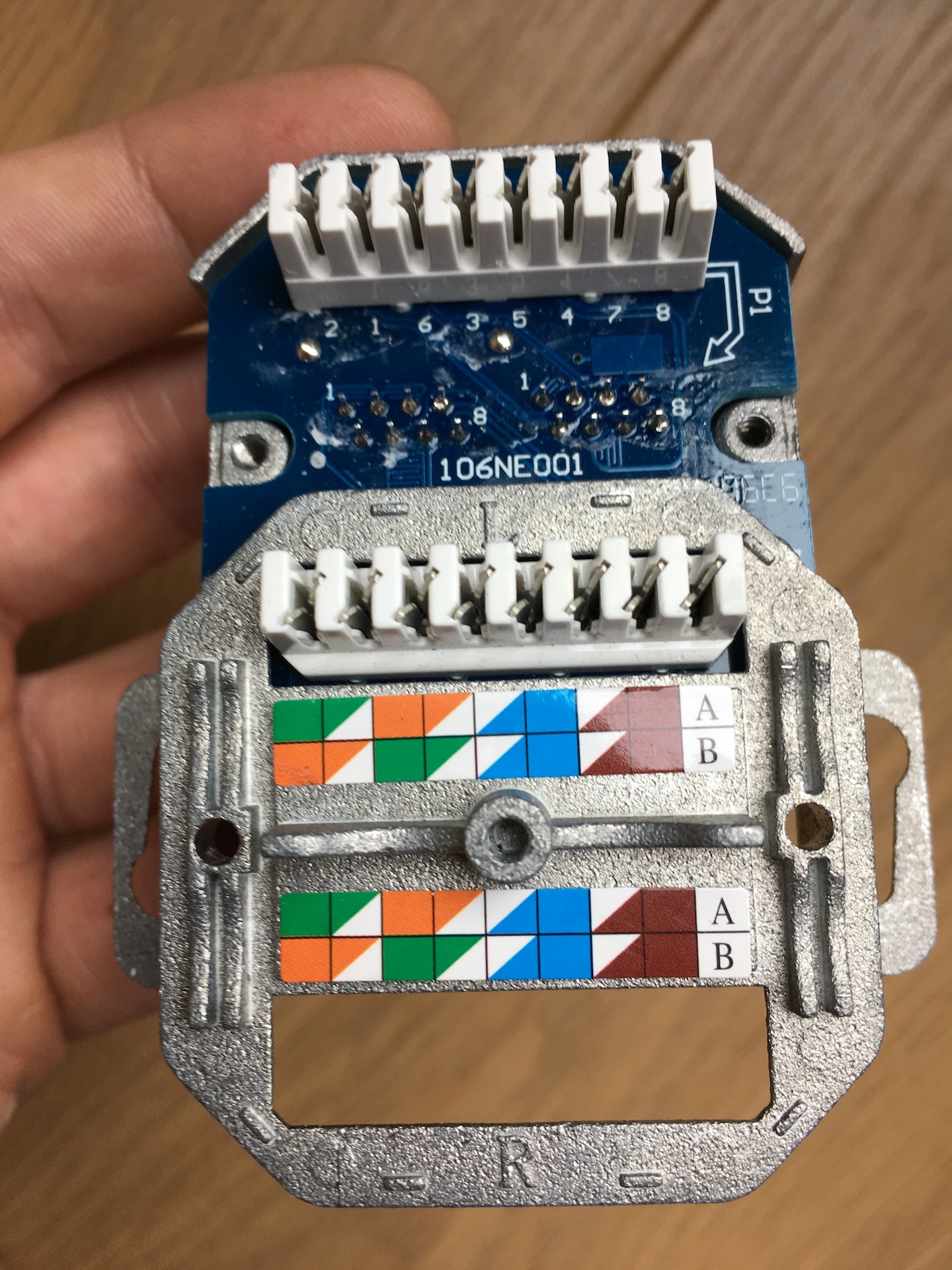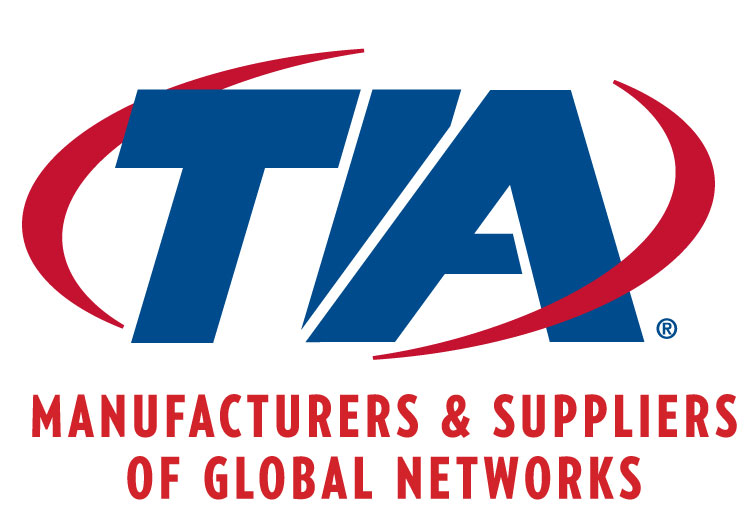|
EIA-568
ANSI/TIA-568 is a technical standard for commercial building cabling for telecommunications products and services. The title of the standard is ''Commercial Building Telecommunications Cabling Standard'' and is published by the Telecommunications Industry Association (TIA), a body accredited by the American National Standards Institute (ANSI). , the revision status of the standard is ''ANSI/TIA-568-D'', published 2015, which replaced TIA/EIA-568-C of 2009, revision B of 2001, and revision A of 1995, and the initial issue of 1991, which are now obsolete. Perhaps the best-known features of ANSI/TIA-568 are the pin and pair assignments for eight-conductor 100-ohm balanced twisted pair cabling. These assignments are named ''T568A'' and ''T568B''. History ANSI/TIA-568 was developed through the efforts of more than 60 contributing organizations including manufacturers, end-users, and consultants. Work on the standard began with the Electronic Industries Alliance (EIA), to define standar ... [...More Info...] [...Related Items...] OR: [Wikipedia] [Google] [Baidu] |
Category 5 Cable
Category 5 cable (Cat 5) is a twisted pair cable for computer networks. Since 2001, the variant commonly in use is the Category 5e specification (Cat 5e). The cable standard provides performance of up to 100 MHz and is suitable for most varieties of Ethernet over twisted pair up to 2.5GBASE-T but more commonly runs at (Gigabit Ethernet) speeds. Cat 5 is also used to carry other signals such as telephone and video. This cable is commonly connected using punch-down blocks and modular connectors. Most Category 5 cables are unshielded, relying on the balanced line twisted pair design and differential signaling for noise rejection. Standards The specification for category 5 cable is defined in ISO/IEC 11801, IEC 61156 and EN 50173. The specification for category 5 cable was defined in ANSI/ TIA/EIA-568-A, with clarification in TSB-95. These documents specify performance characteristics and test requirements for frequencies up t ... [...More Info...] [...Related Items...] OR: [Wikipedia] [Google] [Baidu] |
Modular Connector
A modular connector is a type of electrical connector for cords and cables of electronic devices and appliances, such as in computer networking, telecommunication equipment, and audio headsets. Modular connectors were originally developed for use on specific Bell System telephone sets in the 1960s, and similar types found use for simple interconnection of customer-provided telephone subscriber premises equipment to the telephone network. The Federal Communications Commission (FCC) mandated in 1976 an interface registration system, in which they became known as registered jacks. The convenience of prior existence for designers and ease of use led to a proliferation of modular connectors for many other applications. Many applications that originally used bulkier, more expensive connectors have converted to modular connectors. Probably the best-known applications of modular connectors are for telephone and Ethernet. Accordingly, various electronic interface specifications exist ... [...More Info...] [...Related Items...] OR: [Wikipedia] [Google] [Baidu] |
Telecommunications Industry Association
The Telecommunications Industry Association (TIA) is accredited by the American National Standards Institute (ANSI) to develop voluntary, consensus-based industry standards for a wide variety of Information and Communication Technologies (Information and communication technologies, ICT) products, and currently represents nearly 400 companies. TIA's Standards and Technology Department operates twelve engineering committees, which develop guidelines for private radio equipment, cellular towers, data terminals, satellites, telephone terminal equipment, accessibility, VoIP devices, structured cabling, data centers, mobile device communications, multimedia multicast, vehicular telematics, healthcare ICT, Machine to machine, machine to machine communications, and smart grid, smart utility networks. Active participants include communications equipment manufacturers, service providers, government agencies, academic institutions, and end-users are engaged in TIA's standards setting proc ... [...More Info...] [...Related Items...] OR: [Wikipedia] [Google] [Baidu] |
Category 3 Cable
Category 3 cable, commonly known as or station wire, and less commonly known as VG or voice-grade (as, for example, in 100BaseVG), is an unshielded twisted pair (UTP) cable used in telephone wiring. It is part of a family of standards defined jointly by the Electronic Industries Alliance (EIA) and the Telecommunications Industry Association (TIA) and published in TIA/EIA-568-B. Although designed to reliably carry data up to 10 Mbit/s, modern data networks run at much higher speeds, and or better cable is generally used for new installations. Networking was widely used in computer networking in the early 1990s for 10BASE-T Ethernet and, to a much lesser extent, for 100BaseVG Ethernet, Token Ring and 100BASE-T4. The original Power over Ethernet 802.3af specification supports the use of cable, but the later 802.3at Type 2 high-power variation does not.IEEE 802.3at-2009, clause 33.1.1c In some use cases and for short distances, Cat 3 may be capable of carrying 100BASE- ... [...More Info...] [...Related Items...] OR: [Wikipedia] [Google] [Baidu] |
8P8C Modular Connector
A modular connector is a type of electrical connector for cords and cables of electronic devices and appliances, such as in computer networking, telecommunication equipment, and audio headsets. Modular connectors were originally developed for use on specific Bell System telephone sets in the 1960s, and similar types found use for simple interconnection of customer-provided telephone subscriber premises equipment to the telephone network. The Federal Communications Commission (FCC) mandated in 1976 an interface registration system, in which they became known as registered jacks. The convenience of prior existence for designers and ease of use led to a proliferation of modular connectors for many other applications. Many applications that originally used bulkier, more expensive connectors have converted to modular connectors. Probably the best-known applications of modular connectors are for Telephone line, telephone and Ethernet. Accordingly, various electronic interface specif ... [...More Info...] [...Related Items...] OR: [Wikipedia] [Google] [Baidu] |
Technical Standard
A technical standard is an established norm or requirement for a repeatable technical task which is applied to a common and repeated use of rules, conditions, guidelines or characteristics for products or related processes and production methods, and related management systems practices. A technical standard includes definition of terms; classification of components; delineation of procedures; specification of dimensions, materials, performance, designs, or operations; measurement of quality and quantity in describing materials, processes, products, systems, services, or practices; test methods and sampling procedures; or descriptions of fit and measurements of size or strength. It is usually a formal document that establishes uniform engineering or technical criteria, methods, processes, and practices. In contrast, a custom, convention, company product, corporate standard, and so forth that becomes generally accepted and dominant is often called a ''de facto'' standard. A techni ... [...More Info...] [...Related Items...] OR: [Wikipedia] [Google] [Baidu] |
Pinout
In electronics, a pinout (sometimes written "pin-out") is a cross-reference between the contacts, or ''pins'', of an electrical connector or electronic component, and their functions. "Pinout" now supersedes the term "basing diagram" that was the standard terminology used by the manufacturers of vacuum tubes and the RMA. The RMA started its standardization in 1934, collecting and correlating tube data for registration at what was to become the EIA. The EIA (Electronic Industries Alliance) now has many sectors reporting to it, and sets what are known as EIA standards where all registered pinouts and registered jacks can be found. Purpose The functions of contacts in electrical connectors, be they power- or signaling-related, must be specified in order for connectors to be interchangeable. When connected, each contact of a connector must mate with the contact on the other connector that has the same function. If contacts of disparate functions are allowed to make contact, the conne ... [...More Info...] [...Related Items...] OR: [Wikipedia] [Google] [Baidu] |
Balanced Line
In telecommunications and professional audio, a balanced line or balanced signal pair is a circuit consisting of two conductors of the same type, both of which have equal impedances along their lengths and equal impedances to ground and to other circuits. The chief advantage of the balanced line format is good rejection of common-mode noise and interference when fed to a differential device such as a transformer or differential amplifier.G. Ballou, ''Handbook for Sound Engineers'', Fifth Edition, Taylor & Francis, 2015, p. 1267–1268. As prevalent in sound recording and reproduction, balanced lines are referred to as balanced audio. Common forms of balanced line are twin-lead, used for radio frequency signals and twisted pair, used for lower frequencies. They are to be contrasted to unbalanced lines, such as coaxial cable, which is designed to have its return conductor connected to ground, or circuits whose return conductor actually is ground (see earth-return telegraph). Bal ... [...More Info...] [...Related Items...] OR: [Wikipedia] [Google] [Baidu] |
Wire White Orange Stripe
Overhead power cabling. The conductor consists of seven strands of steel (centre, high tensile strength), surrounded by four outer layers of aluminium (high conductivity). Sample diameter 40 mm A wire is a flexible strand of metal. Wire is commonly formed by drawing the metal through a hole in a die or draw plate. Wire gauges come in various standard sizes, as expressed in terms of a gauge number. Wires are used to bear mechanical loads, often in the form of wire rope. In electricity and telecommunications signals, a "wire" can refer to an electrical cable, which can contain a "solid core" of a single wire or separate strands in stranded or braided forms. Usually cylindrical in geometry, wire can also be made in square, hexagonal, flattened rectangular, or other cross-sections, either for decorative purposes, or for technical purposes such as high-efficiency voice coils in loudspeakers. Edge-wound coil springs, such as the Slinky toy, are made of special flattened wire. H ... [...More Info...] [...Related Items...] OR: [Wikipedia] [Google] [Baidu] |
Wire White Green Stripe
Overhead power cabling. The conductor consists of seven strands of steel (centre, high tensile strength), surrounded by four outer layers of aluminium (high conductivity). Sample diameter 40 mm A wire is a flexible strand of metal. Wire is commonly formed by drawing the metal through a hole in a die or draw plate. Wire gauges come in various standard sizes, as expressed in terms of a gauge number. Wires are used to bear mechanical loads, often in the form of wire rope. In electricity and telecommunications signals, a "wire" can refer to an electrical cable, which can contain a "solid core" of a single wire or separate strands in stranded or braided forms. Usually cylindrical in geometry, wire can also be made in square, hexagonal, flattened rectangular, or other cross-sections, either for decorative purposes, or for technical purposes such as high-efficiency voice coils in loudspeakers. Edge-wound coil springs, such as the Slinky toy, are made of special flattened wire. H ... [...More Info...] [...Related Items...] OR: [Wikipedia] [Google] [Baidu] |
Demarcation Point
In telephony, the demarcation point is the point at which the public switched telephone network ends and connects with the customer's on-premises wiring. It is the dividing line which determines who is responsible for installation and maintenance of wiring and equipment—customer/subscriber, or telephone company/provider. The demarcation point varies between countries and has changed over time. ''Demarcation point'' is sometimes abbreviated as demarc, DMARC, or similar. The term MPOE (minimum or main point of entry) is synonymous, with the added implication that it occurs as soon as possible upon entering the customer premises. A network interface device often serves as the demarcation point. History Prior to Federal Communications Commission (FCC) regulations separating the ownership of customer premises telecommunication equipment from the telephone network, there was no need for a public standard governing the interconnection of customer premises equipment (CPE) to the ... [...More Info...] [...Related Items...] OR: [Wikipedia] [Google] [Baidu] |





.jpg)
